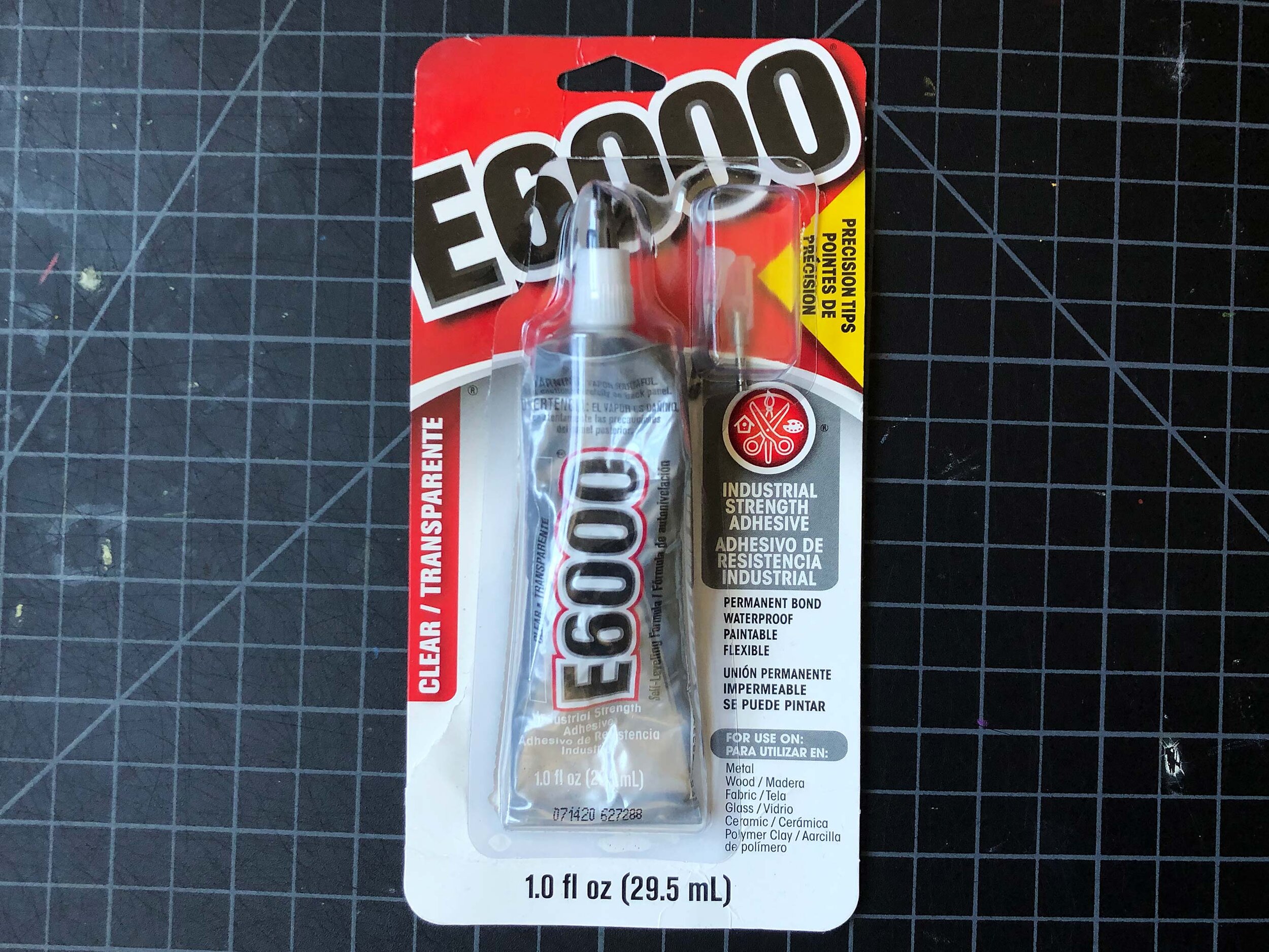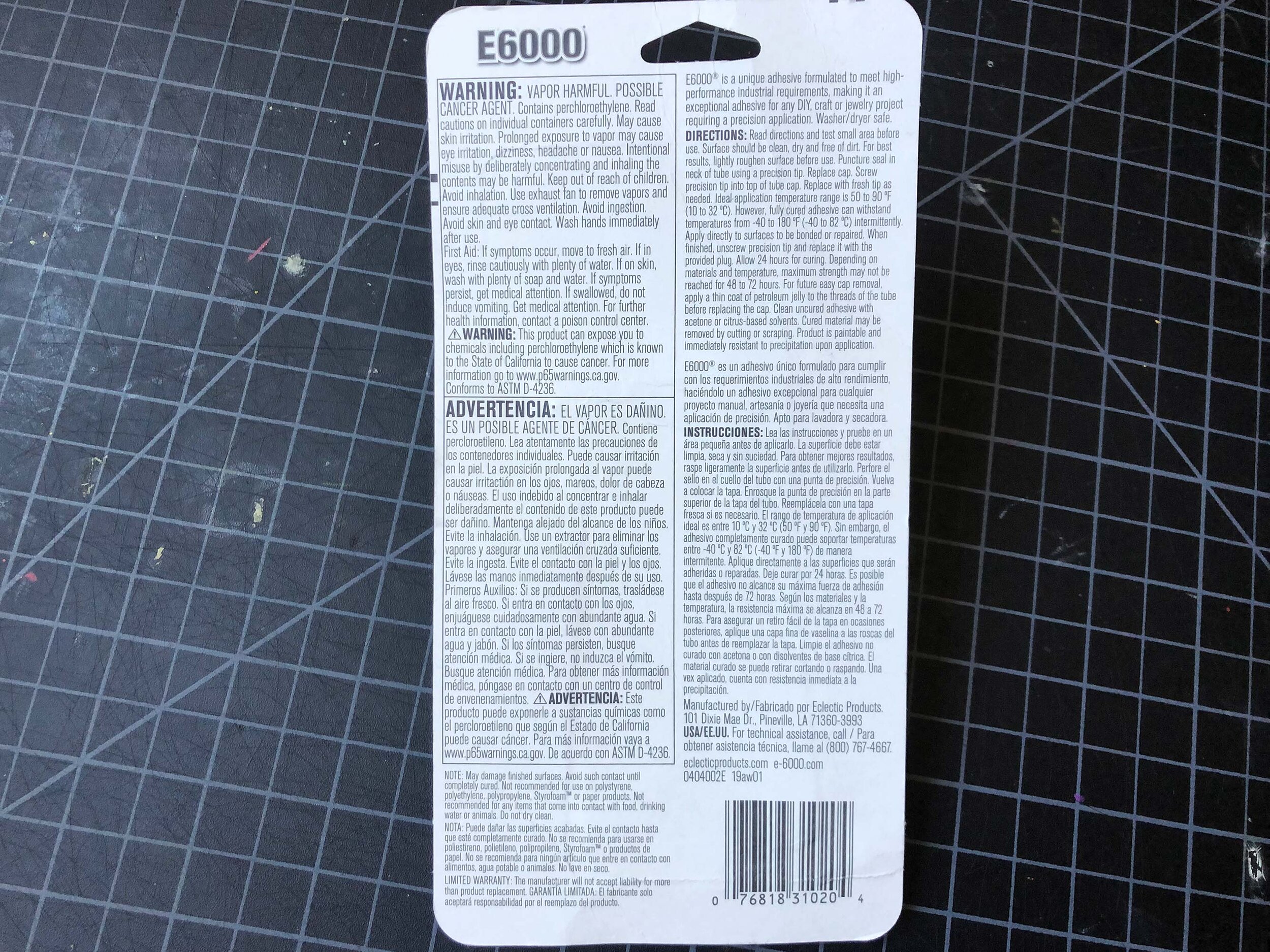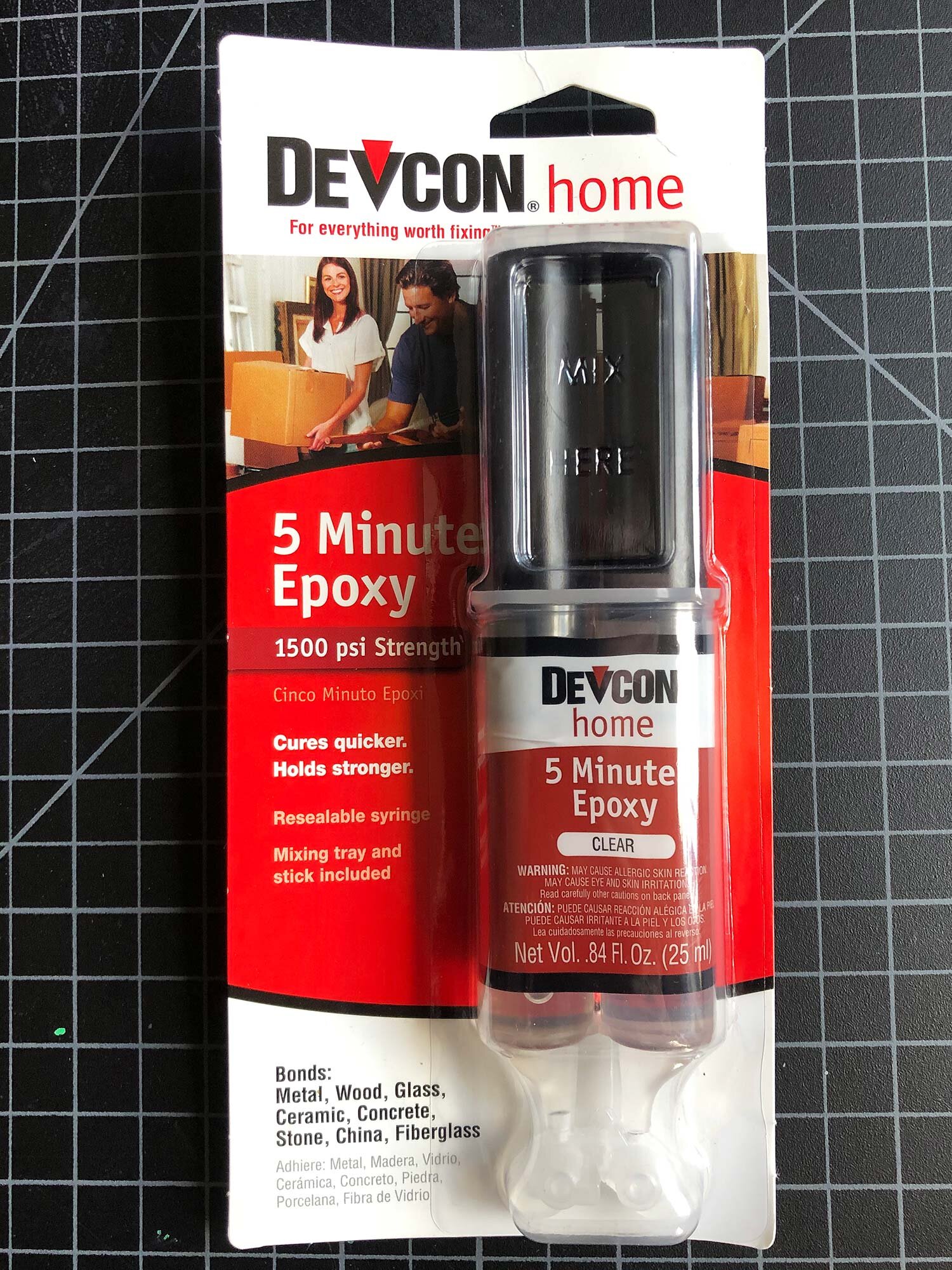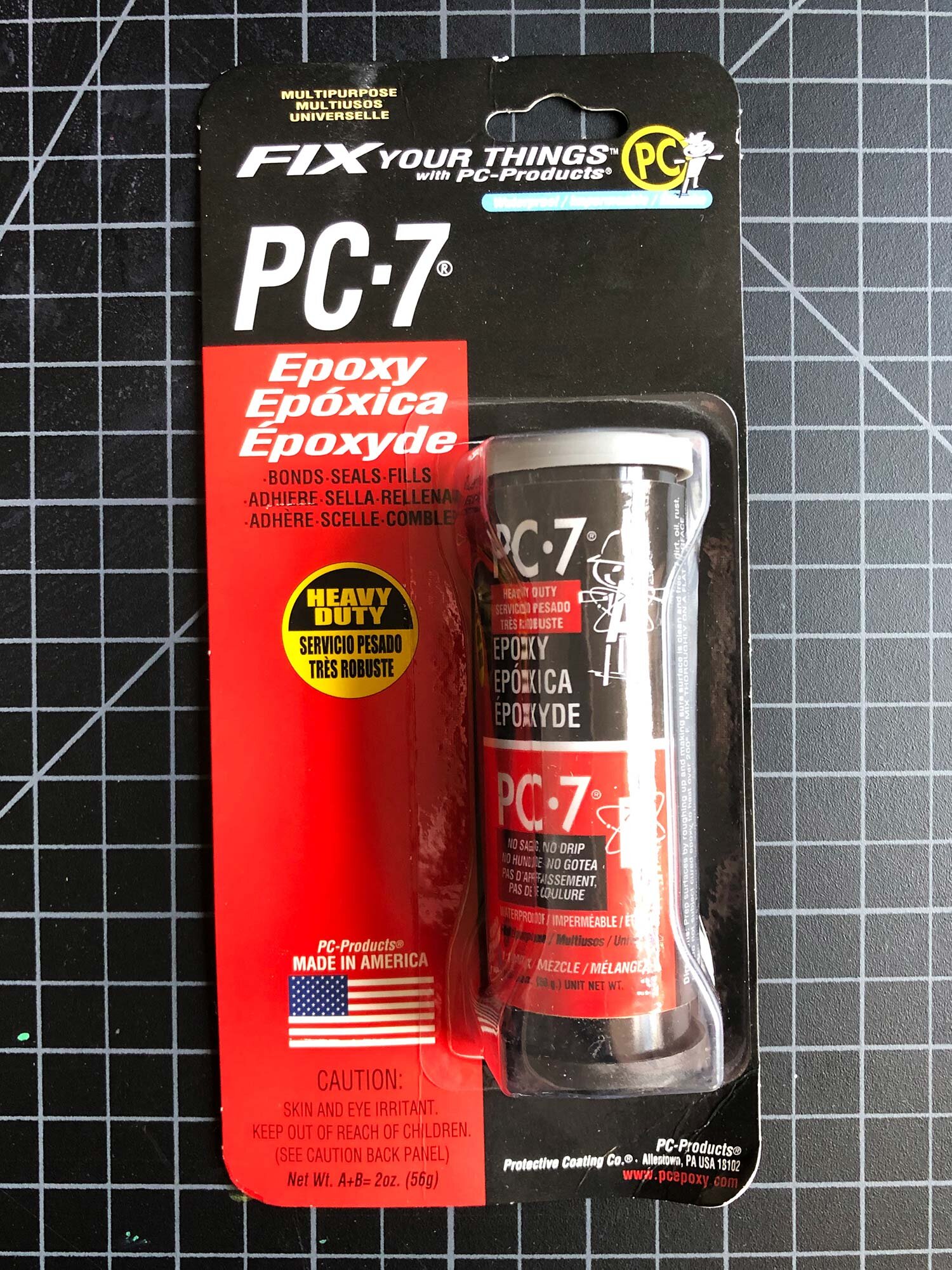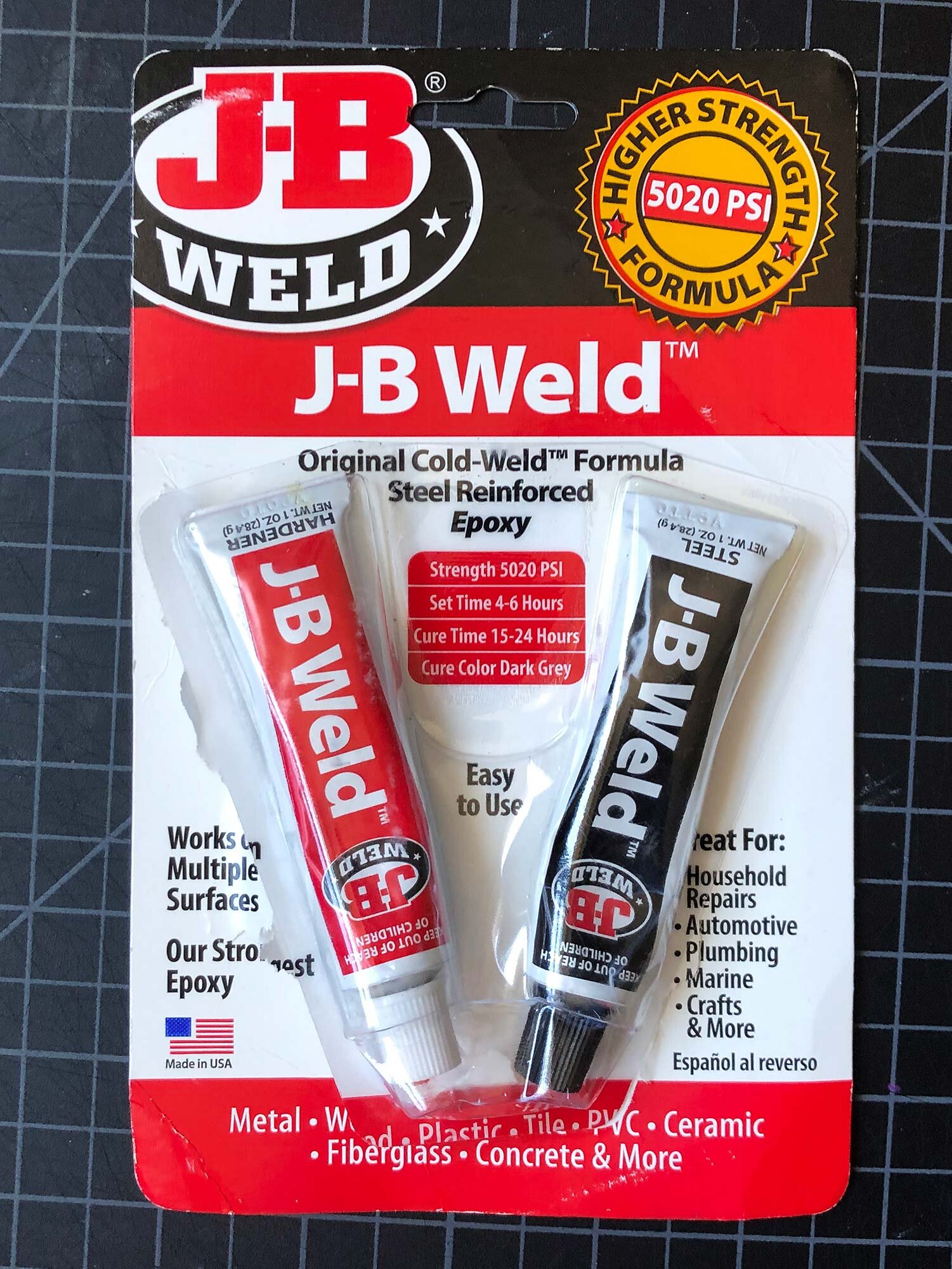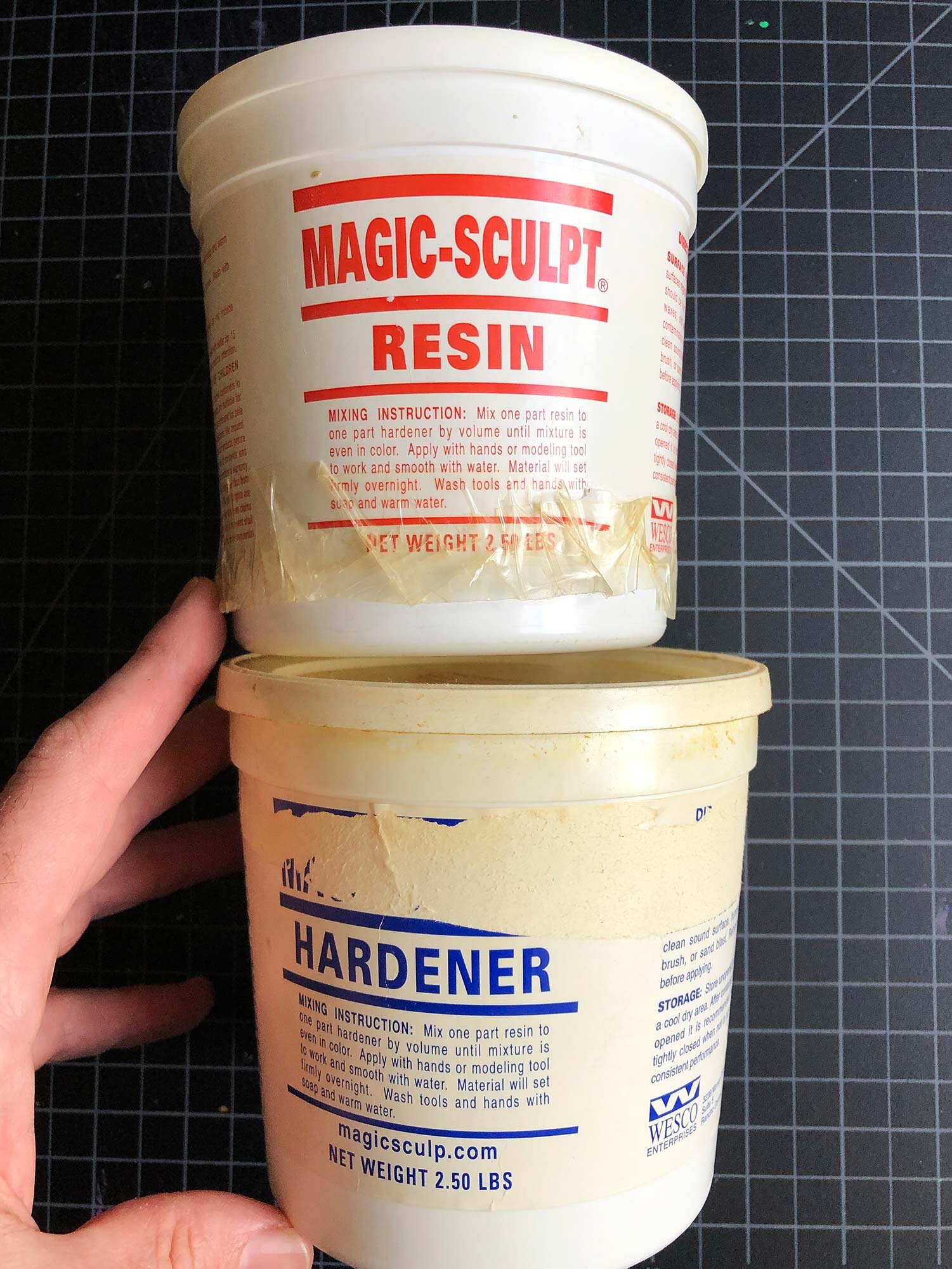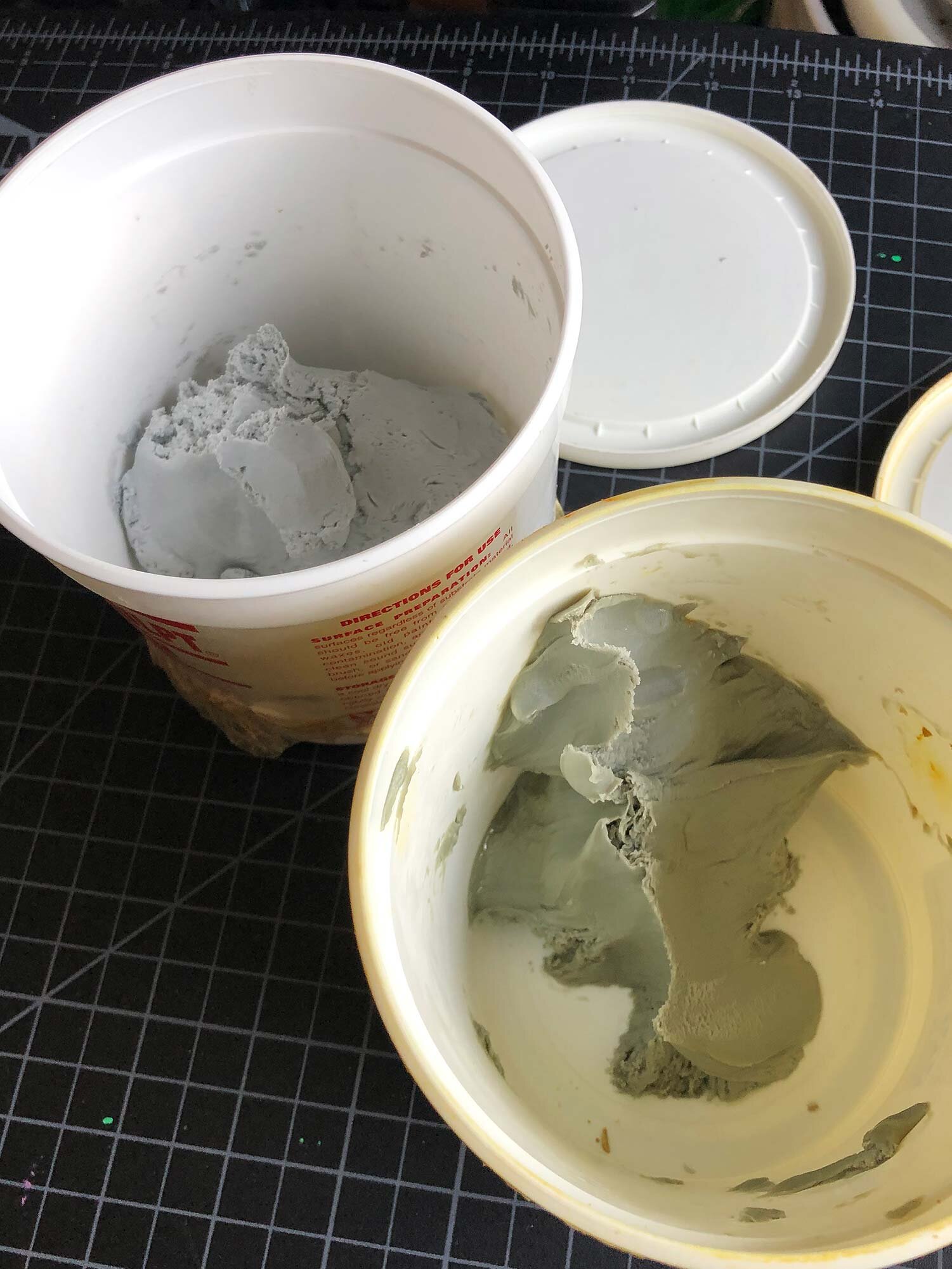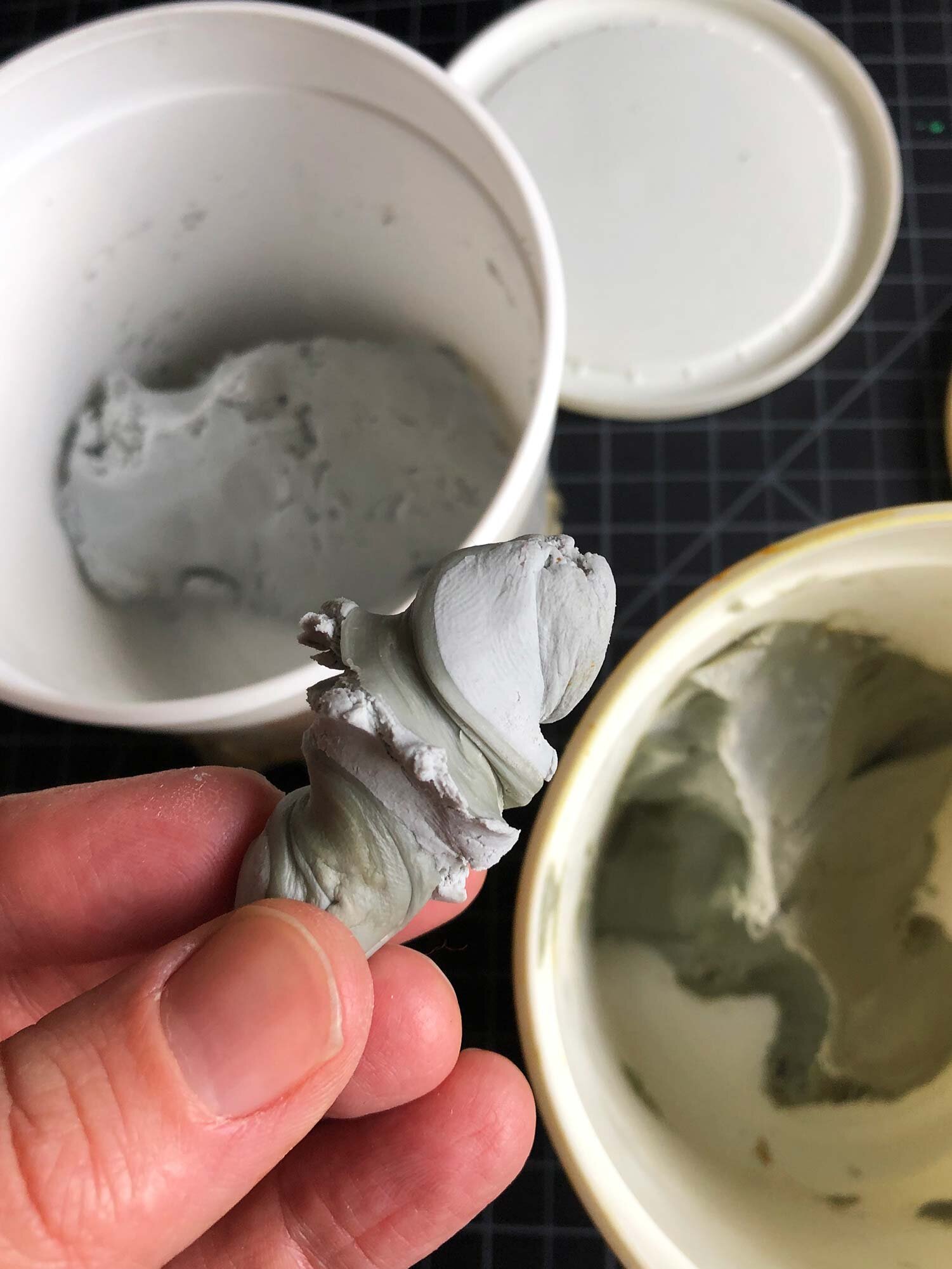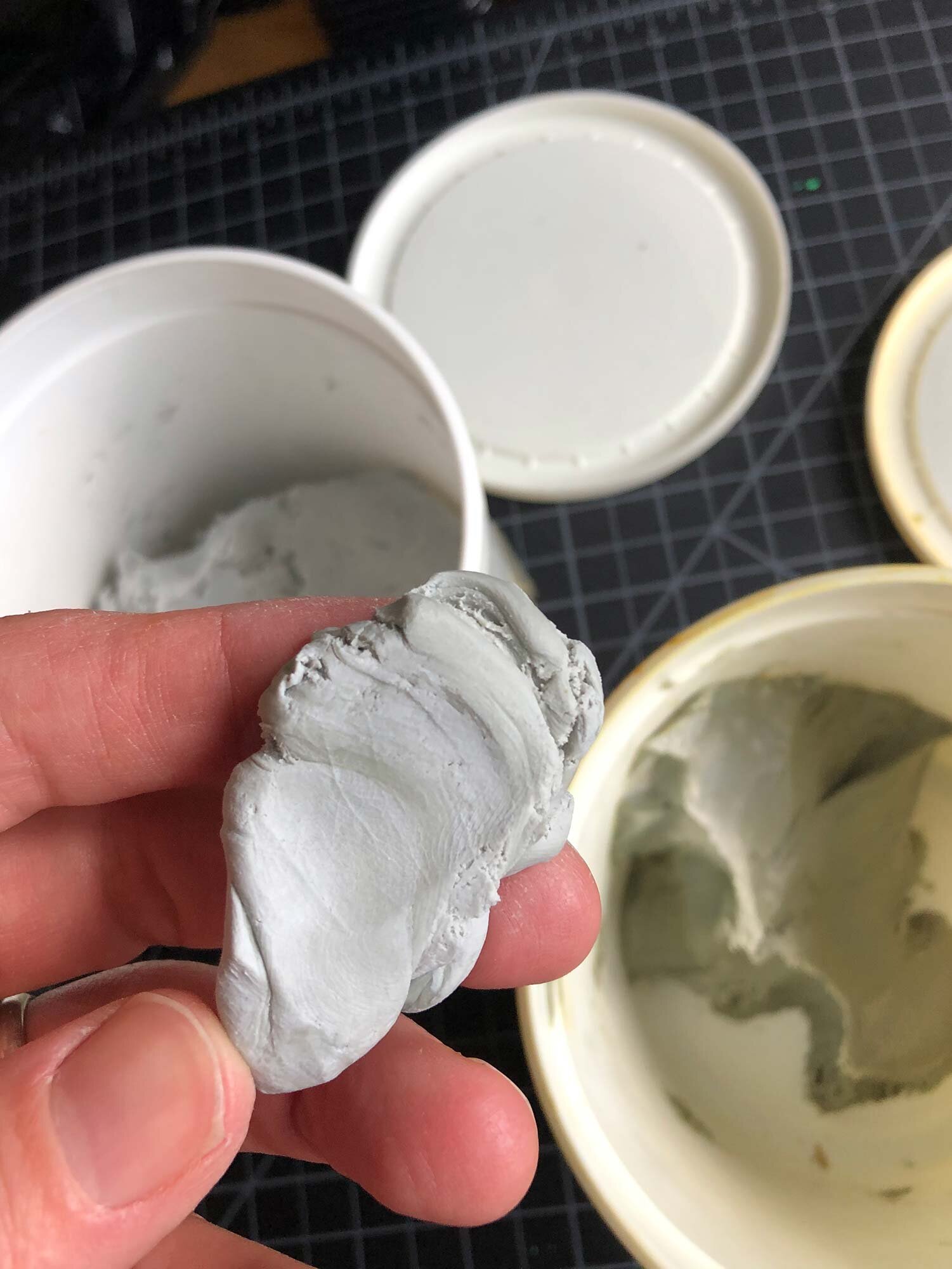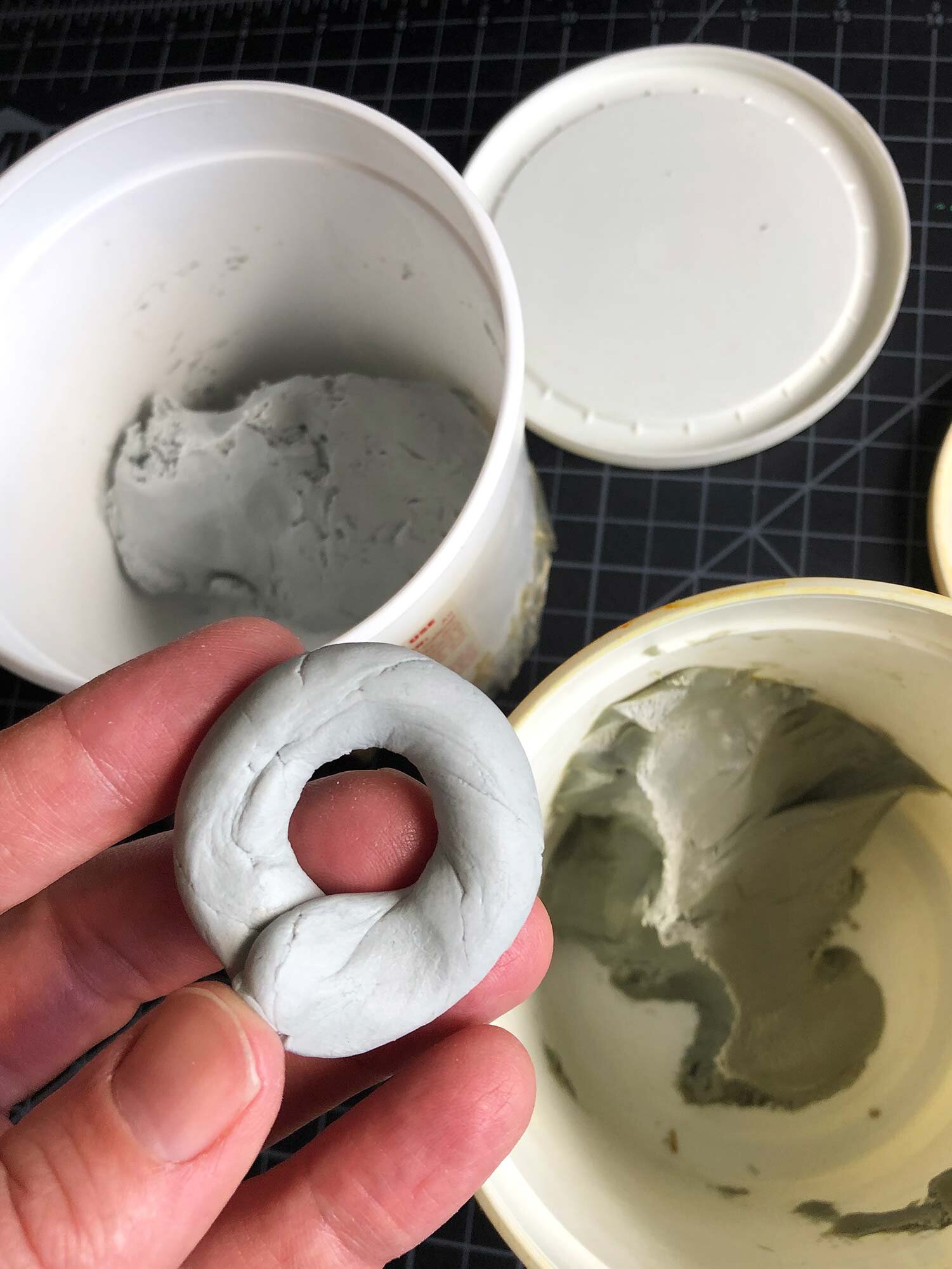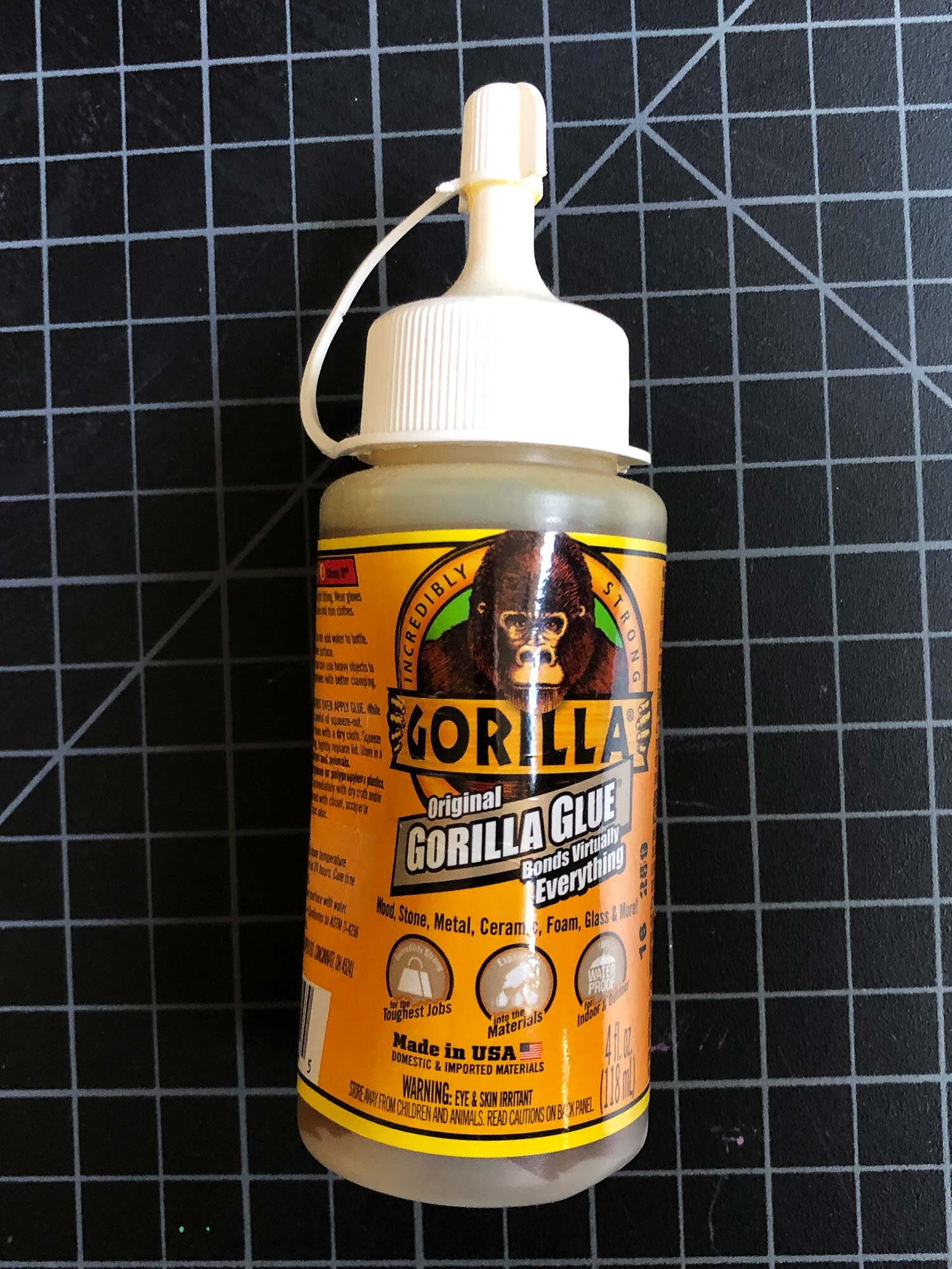Glues and adhesives are a vital part of any ceramics studio. Used for repairing and creating, it’s important to have the right glue for the job. This post will cover a variety of glues and adhesives, each with their own features and drawbacks. There’s no shame in using glue, some prominent ceramic artists are even known to say that epoxies and glues are “one of their mediums.”
TOP PICK: E6000 Industrial Strength Adhesive
E6000 is the one glue that should be in every studio. It’s ready to use right out of the tube, dries in a relatively short amount of time, and can be used with ceramic, metal, wood, fabric, glass, and polymer clay. It’s equally at home for making jewelry as it is for repairing things like ceramic mug handles. And it can often be found with precision tips so you can apply just the right amount.
E6000 also dries quickly, staying tacky for 4 to 5 minutes. Then, allow at least 24 hours to cure to full strength. When fully cured (may take as long as 48 to 72 hours) it has a strength of 3,500 PSI or pounds per square inch. E6000 also can be painted, sanded, or scraped away, and it is resistant to water upon application. It’s also available in a variety of sizes, including small 1 oz tubes suitable for precision work.
For info on more glues and adhesives, keep reading.
Table of Contents
Top Pick: E6000
Devcon and other 2-part epoxies
PC-7 and PC-11
JB Weld
Magic-Sculpt
Gorilla Glue
Modge Podge
Devcon 2 Part 5 Minute Epoxy
Devcon 5 Minute Clear epoxy is a two-part adhesive that can be found in plungers (pictured) or larger volumes in separate bottles.
Two-part epoxies are strong and are a better option than the various “super glues” found everywhere. The clear versions of these epoxies also do a great of mimicking the shiny look of a fired glaze, although they are available in off white as well. My go to brand is Devcon, although any clear two-part epoxy will get the job done. Look for plunger barrel option (pictured) although some come in larger sizes in two bottles. Also be sure to pick a “5 minute” epoxy. Some have longer set times up to 30-60 minutes, and than can be frustrating to use with a runny glue.
To use, squeeze out equal amounts of the resin and hardener on something disposable such as a piece of scrap paper, and mix with a kraft stick or even just a twisted up piece of cardboard. Then apply to what needs to be glued and press together. You may need to hold it in place for 5 to 10 minutes (tape or rubber bands can help) and then you should be good. The pictured Devcon Home 5 Minute Epoxy has a 5 minute handling time, an 8-10 minute set time, and a 60 minute curing time, with a strength of 1500 PSI when it is cured. Fast and strong! That’s why 2-part epoxies are handy to have in the studio. Below are links to the Devcon (pictured) and Gorilla 2 part clear epoxies.
PC-7 and PC-11
PC-7 is a charcoal gray 2 part paste epoxy. The smallest 2 oz (56g) option is pictured.
PC-7 and PC-11 are really interesting two-part paste epoxies that bond to ceramic along with wood, metal, glass, tile, masonry, rubber, fiberglass, and some plastics. PC-7 is charcoal gray, while PC-11 is white and rated for underwater uses. (PC-11 will even cure underwater.) Both are great options for working with sculpture as they will fill gaps, hold things in place on a vertical or upside down surface, and just do things that other adhesives won’t do.
PC-11 is a two part white, marine-grade paste epoxy.
Described by the manufacturer as “thicker than peanut butter but less thick than bubble gum,” these products can be a bit of a pain to work with because they are so sticky. My technique is to scoop out equal parts (eyeball measure) with kraft sticks and mix on a piece of cardboard until the colors are homogenized, wait a bit for the epoxy to thicken, and then apply. For cleanup, I’ve found that a small bowl of vinegar with quickly clean up any PC-7 or PC-11 on my fingers, although be careful to not get vinegar on your working surfaces or the adhesive won’t stick as well. If you have excess epoxy on a sculpture or anywhere, it can be wiped away with a cloth or paper towel.
Both epoxies have a working time of about 30 minutes, and will fully cure in 12 to 24 hours for a strength of 2150 PSI (PC-7) or 1710 PSI (PC-11).
I stock both of these in my studio, usually in the small 2 oz package. They always come in handy and can be used to attach tiles to mounting wire or cleats, and are paintable when cured. I even had a friend who (not recommended!) bisque fired PC-11 as a gap filler and then would glaze over it. It’s a crazy adhesive that you can push to the limits.
PC-7 and PC-11 are available in a variety of sizes, ranging from 2oz to 10 gallons.
J-B Weld
J-B Weld is a two-part, paste epoxy pictured here with the smallest 2 oz package (I oz per tube).
J-B Weld is similar to PC-7 (both are made primarily with bisphenol-A) but it is a bit runnier when mixed and has a much higher strength, rated at 5020 PSI. Invented as an alternative to welding plumbing, it bonds to ceramic, metal, wood, plastic, PVC, fiberglass, and more. It also has some metal in the mix, so it can withstand temperatures up to 550 Fahrenheit when fully cured. For many, it’s their favorite epoxy.
After mixing, J-B Weld has a set time of 4 to 6 hours, a cure time of 15-24 hours, and is dark grey, just a bit darker than PC-7. J-B Weld is a paste epoxy but it’s a trade off between it’s much higher strength versus PC-7, while having a slightly less pasty quality and a longer set time. But for the right job, there’s nothing better.
Magic-Sculpt
The 5lb Magic-Sculpt kit comes with 2.5 lb tubs of resin and hardener.
Magic-Sculpt is truly magic. A two-part epoxy, when the resin and hardener are mixed you have a non-sticky, almost clay-like substance that can be sculpted, be used as a gap filler, or even be used to attach cleats or other attachment. Once mixed, the working time is 45 minutes to an hour and in 12 to 24 hours, the material will be rock hard.
The material can be smoothed with a bit of water while it’s soft, and once hard, it can be painted, sanded or even drilled through. Magic-Sculpt is available in seven colors, including natural (gray), white, tan, light brown, dark brown, green, and black.
See below for pictures of how the natural gray color is mixed and the sculpting potential.
An example of how Magic-Sculpt can be mixed:
Gorilla Glue
Gorilla Glue is a polyurethane adhesive that is most commonly used in woodworking but can bond a wide variety of materials, is waterproof, and expands after application, making it an excellent gap filler. Note that Gorilla now makes a wide variety of glues, but the original Gorilla Glue is what is being reviewed here. It’s a pretty original product that can bond wood, stone, metal, ceramic, foam, glass, concrete, and more.
Because Gorilla Glue expands after application (up to three times) it does take a bit of work. You’ll need to wipe away excess glue as it expands for about 15 minutes. As it expands, excess glue can be chipped or sanded off, and the object being glued should remained clamped for at least two hours, and a full cure is reached after 24 hours.
The original Gorilla Glue has a honey color, but it is also now available in clear. (Some reviewers have noted that the clear Gorilla Glue has less stickiness, so make sure to clamp pieces tightly.) Gorilla Glue can harden when exposed to air, so make sure to keep the glue squeezed to the top of the bottle and only buy the size needed.
Summary
This post has covered a variety of adhesives and epoxies that are useful in ceramics studios, but can be used for sculpture, crafts, really just about anything. You may find that one glue, such as E6000, will cover most of your studio needs but you never know, the right glue or the right tool can make all the difference when you need it.
What adhesives do you use in the studio? Let us know in the comments.
